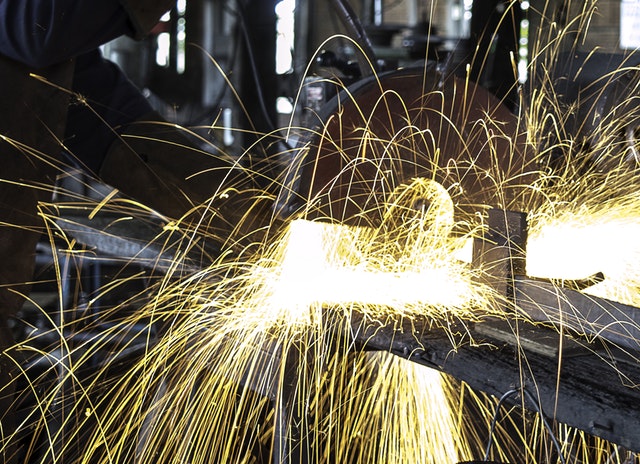Metal Fabrication is not a new concept and without even realising you see it in your everyday life all around you. From light fittings to metal display stands to your other everyday encounters, fabrication and welding can be seen.
A lot of men and women use welding and fabrication as interchangeable forms of a word, but that is not the same instance. In its simplest sense, fabrication is the practice of producing a job from steel, and welding may be a single operation throughout that procedure.
In other words, welding combines together two pieces of glass, metal, or thermoplastics with similar melting points and compositions using fusion. Fabrication is the evolutionary process of developing a metallic merchandise, from design and layout to finishing and formation. Nonetheless, in this ever-evolving sector, it is very likely that lots of welders can manufacture, and it is more probable that fabricators could weld.
Thus, what are the similarities and differences between both? Have a look at the resources, procedures, and security precautions that go into both the trades.
Tools
An extensive collection of recognizable manufacturing tools for novices, such as numerous angle grinder discs along with a pair of cleco fasteners, are used. Most metal fabrication tools cannot be utilized for welding since that procedure needs distinct, more specific tools, for example:
- Abrasives
- Flexible wrench
- Benders
- Chipping hammers
- Consumable electrodes
- Cylinders with custom carts
- Electrode holders
- Hand file
- Soapstone
- Tungsten inert gas (TIG) consumables
- Vice and vice grips
- Welding clamps
Welded mesh supplies are specific to welding processes however as can be seen above with the welding clamps, some can be used for metal fabrication processes as well.
In terms of the similarities, the two professions require cleaning supplies to disinfect the metal. Experienced users use a wire brush and natural solvent, such as acetone or a mild alkaline solution, or even a citrus-based degreaser with no butoxyethanol (a chemical compound which may lead to liver and breathing troubles) to wash away any grease, fatty residue, and germs.
To wash out the facility following a hard day’s work, welders and fabricators utilize regular mops and sweepers. For industry-specific cleaning methods, these transaction professionals frequently utilize surface protection films, flooring coatings and finishes, and electro-cleaners.

Processes
Since welding is a metal forming procedure, it moves hand-in-hand with sheet metal manufacturing, and every trade utilizes similar procedures, like building and bending, to find the final product. To clarify, there are unique strategies to weld, such as oxy-acetylene, TIG (the most frequent type in fab shops), and gas metal arc (GMAW) welding.
But since sheet metal manufacturing is the overarching process, it involves many distinct procedures, including specialised methods, which may entail:
- Die cutting
- Finishing
- Hydroforming
- Roll forming
- Shrinking
- Spinning
- Stamping
- Stretching
Security Precautions
Since this business can be more harmful than others because of operating with hot metal and heavy machines, each welder and sheet metal fabricator needs to be conscious of the security guidelines in their respective stores. To help prevent injury, every tradesperson must own or be supplied (at least) the following:
- Fume extraction equipment
- Protective, flame-resistant trousers
- A hardy, fitted, flame-resistant coat
- Coveralls or leather blouse
- Heavy, non-functional working boots or steel toe boots
- Thick leather working gloves
- An auto-darkening helmet with the proper visor
- Safety goggles
- Hearing protection
- Respirator or dust mask
To help create a safe work environment, every trade’s store should have rigorous equipment storage policies (whether automatic or handheld), and each apprentice should be trained before using machines by themselves. Additionally, all tools must be thoroughly and frequently inspected for any damage.
If it has to do with sheet metal welding and fabrication, the two professions are significant. This transaction is helpful for each and every market, from building and home extensions to automotive and transport.
Welding
Welding is an ancient art that has been in use as the bronze era. It creates a secure, powerful joint that is more powerful than other techniques of bonding metals. Welders ply their trade in several businesses, including mining, construction, oil, and automotive, to name a couple.
Welding is the process where two pieces of metal combine together and in doing so are able to provide object support. The procedure for welding does not only bond the two pieces together in brazing and soldering, however, through the use of intense heat and sometimes the inclusion of different compounds or gases, causes the metallic arrangements of these two bits to combine together and act as one. There are quite a few different welding procedures such as spot welding, metal inert gas (MIG), and tungsten inert gas, which are kinds of gas metal arc welding, arc welding, and gas welding, to mention a couple. Welding may even be performed underwater, as well as in exhibition display services.
